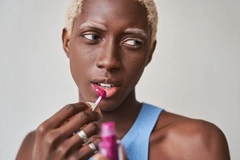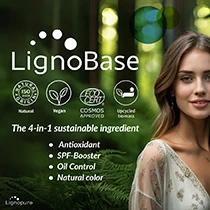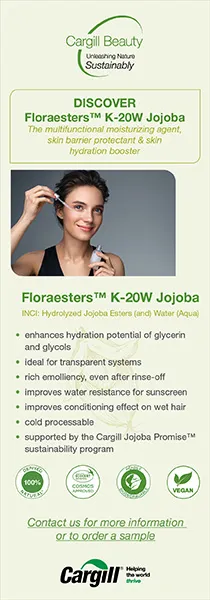FDA mulls oxybenzone safety status after EWG appeals its ban

23 Nov 2022 --- The US Food and Drug Administration (FDA) is responding to the Environmental Working Group’s (EWG) recent calls to ban the sunscreen ingredient oxybenzone based on an alleged lack of safety data. The controversial and contested chemical has been flagged to cause harm to marine life and have potential endocrine-disrupting and allergy-inducing effects.
“The Agency received a request for deferral of Agency action on a number of the 12 active ingredients we had proposed that were not generally recognized as safe and effective (GRASE) due to insufficient data (including oxybenzone),” an FDA spokesperson tells PersonalCareInsights.
“The Agency is currently working with the manufacturers that requested deferral to allow them time to develop the needed data to support positive GRASE determinations for these ingredients. [However,] sunscreen products containing oxybenzone are currently legally marketed under the deemed final order for sunscreen drug products.”
“Time’s up, sunscreen industry”
The EWG says that the sunscreen industry had until September to prove to the FDA that oxybenzone is safe and effective.
The FDA put forward its original request for companies to demonstrate the chemical’s safety in 2021.
“If the sunscreen industry won’t defend the use of oxybenzone in sunscreens, why should it be allowed? The FDA should act immediately if manufacturers won’t produce data showing it’s safe. Other nations have taken steps to limit or even ban oxybenzone from sunscreens,” EWG argues. The FDA is currently working with the manufacturers that requested deferral to allow them time to develop the needed data to support positive GRASE determinations, says the spokesperson.
The FDA is currently working with the manufacturers that requested deferral to allow them time to develop the needed data to support positive GRASE determinations, says the spokesperson.
“It’s time for the FDA to take action if the industry doesn’t respond by the September deadline.”
In FDA’s defense
The FDA spokesperson states that the agency offered to defer further action on each of the 12 ingredients, to allow time for the requisite data to be collected.
The FDA indicated that if it received a “satisfactory indication” of timely and diligent progress on the studies required to fill the data gaps on the ingredients, it would defer the final order of the GRASE status of sunscreens containing oxybenzone.
“We noted that such a deferral would be for not more than one year, with a possibility of extension depending on further satisfactory progress with the studies,” continues the spokesperson.
“We also indicated that if, in our judgment, studies for any active ingredient did not appear to be proceeding promptly or otherwise did not appear to be productive, we expected to proceed to a final order on sunscreens containing that ingredient after the conclusion of the initial deferral period.”
When it all started
The FDA spokesperson explains that section 505G under the Coronavirus Aid, Relief, and Economic Security Act (CARES Act) modernizes the framework for regulating over-the-counter (OTC) monograph drugs.
“Section 505G also created a ‘final administrative order’ for sunscreens consisting of the requirements specified in 1999 stayed (not in effect) final monograph for OTC sunscreen products, except the requirements governing labeling and effectiveness, which are described in a final labeling and effectiveness testing rule for sunscreens,” they continue.
In the CARES Act, sunscreens are noted to conform to the requirements outlined in the final order, section 505G of the FD&C Act and the general requirements for nonprescription drugs. They are also deemed GRASE and not new drugs, explains the spokesperson.
“The CARES Act also directed FDA to amend and revise this deemed final order for OTC sunscreens products and required that the proposed version of this revised sunscreen order be issued no later than 18 months after the enactment of the CARES Act (i.e., by September 27, 2021). FDA issued this order proposing to revise the sunscreen deemed final order on September 24, 2021.”
The FDA spokesperson says that among the received proposals for changing the GRASE status of sunscreen active ingredients, the final order identified 16 as GRASE.  Oxybenzone not banned as there is insufficient data on its harmful effects.
Oxybenzone not banned as there is insufficient data on its harmful effects.
“The sunscreen proposed order proposes two active ingredients as GRASE (zinc oxide and titanium dioxide), two active ingredients as not GRASE for reasons of safety (trolamine salicylate and PABA), and the remaining 12 ingredients as not GRASE because of insufficient data.”
“For these 12 ingredients, FDA conducted an extensive literature review and provided, for each ingredient, a detailed description of the currently available data and the data gaps that needed to be filled to support a positive GRASE determination for that ingredient,” they conclude.
Further reporting
Researchers at Stanford University in the US found that the sunscreen ingredient, oxybenzone, can be converted into a potentially deadly phototoxin inside anemone and coral cells when exposed to sunlight, resulting in increased damage and maybe death.
Across the sea, the European Commission made moves to restrict the application of oxybenzone, also known as benzophenone-3, with further limitations.
“While there are indications from some studies to suggest that benzophenone-3 may have endocrine effects, the overall evidence is not conclusive enough at present for the Scientific Committee on Consumer Safety (SCCS) to ascertain whether or not benzophenone-3 is an endocrine disrupting substance, and this warrants further investigations,” outlines the SCCS opinion, 2021.
By Venya Patel, with additional reporting by Nicole Kerr












